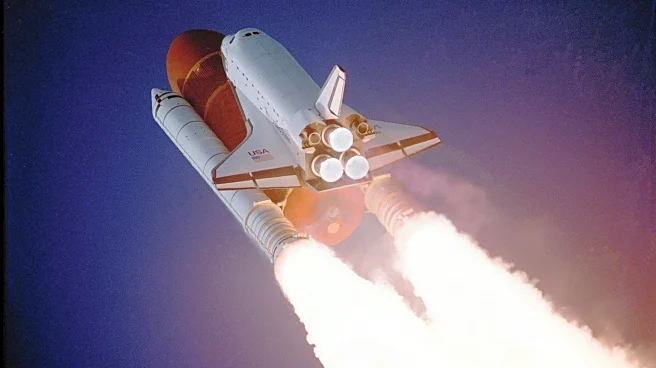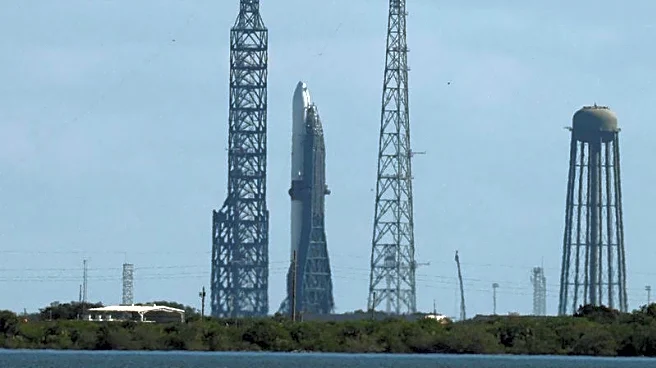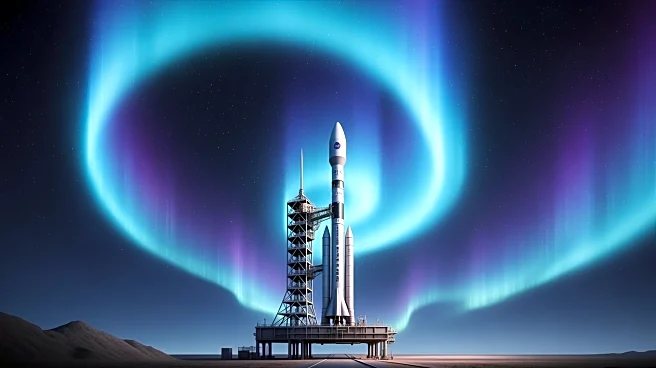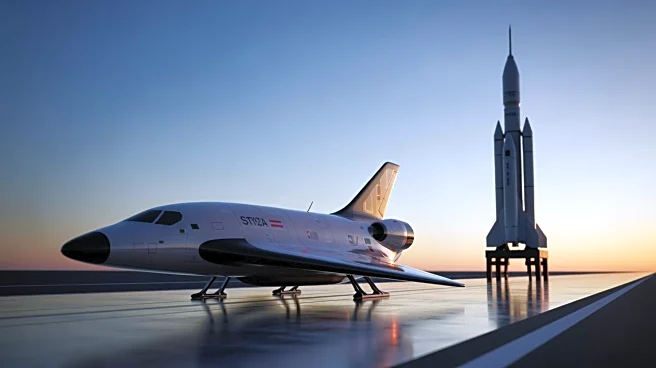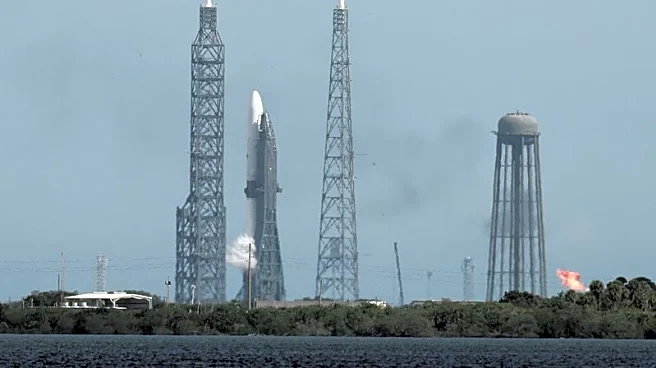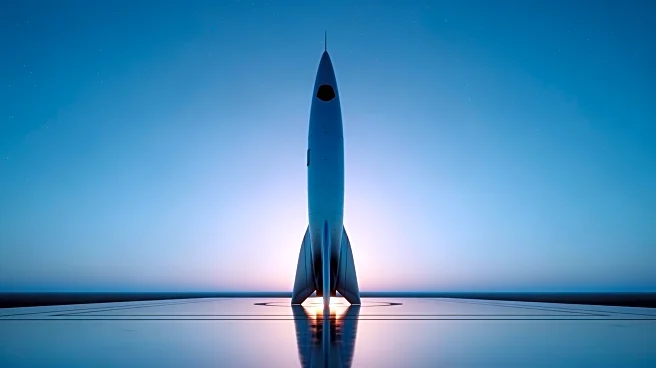What's Happening?
Viasat Inc., a global leader in satellite communications, successfully conducted its first flight test of the HaloNet launch telemetry data relay service onboard Blue Origin's New Glenn rocket. This demonstration was part of NASA's Communications Services
Project within its Space Communications and Navigation Program. The test took place at Cape Canaveral, marking a significant milestone in Viasat's efforts to support NASA's transition from its retiring Tracking and Data Relay Satellite fleet to a diverse portfolio of commercial service offerings by 2031. Viasat's HaloNet solution aims to provide continuous, real-time data transmission during launch operations, utilizing its global L-band satellite network and geostationary orbit satellites. The successful demonstration established a persistent connection to Viasat's network, allowing flight data to be transmitted to the launch operations center for processing.
Why It's Important?
The successful demonstration of Viasat's HaloNet launch telemetry solution is crucial for NASA's future missions, as it provides a reliable alternative to ground-based communications, which can experience blackouts. This capability is essential for maintaining communication and monitoring vehicle performance beyond line-of-sight. The partnership between Viasat and NASA highlights the growing role of commercial technology in supporting government space initiatives. By leveraging commercial solutions, NASA can enhance its operational capabilities while potentially reducing costs associated with maintaining its own satellite fleet. This development also underscores the importance of collaboration between private companies and government agencies in advancing space technology and communications.
What's Next?
Viasat plans to conduct a second demonstration mission with Blue Origin early next year, further validating its launch telemetry services. Additional HaloNet solution demonstrations are anticipated with other partners in 2026. These upcoming tests will continue to explore how commercial technologies can support NASA's communication needs, potentially leading to broader adoption of such solutions in future space missions. As Viasat expands its capabilities, it may also seek to partner with other launch providers, enhancing its position in the space communications market.
Beyond the Headlines
The collaboration between Viasat and NASA represents a shift towards integrating commercial technologies into government space operations. This trend could lead to increased innovation and efficiency in space communications, as private companies bring new solutions to the table. Additionally, the success of such partnerships may encourage other government agencies to explore similar collaborations, potentially transforming the landscape of space technology development.


